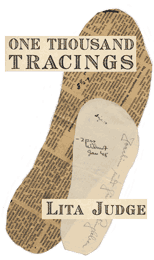Timeline
- 1939 World War II starts in Europe as Germany invades Czechoslovakia in March and Poland in September. The United States proclaims neutrality. Britain, France, Australia, New Zealand and Canada declare war on Germany.
- December 1941 Japanese bomb Pearl Harbor. United States and Britain declare war on Japan. Germany declares war on the United States.
- 1943 Hammy enlists in the Army Air Force.
- 1945 War ends in Europe in May as Germany surrenders. War ends in the Pacific in August as Japan surrenders. Hammy is discharged just before Christmas.
- December 1946 A letter arrived at the Hamerstrom house that alerts them to the post-war problems in Europe. Ernst Mayr and Margaret Morse Nice inform American biologists of the severe hunger of European biologists.
- January 1947 Fran sends 10 packages to Europe but later finds that three of the recipients died before the packages were received. One of those who died was Fran's childhood governess Frauta. Fran was heartbroken but resolved to help as many people as possible. She and Hammy became the heads of the American Ornithologists Union (AOU) committee for relief of European Ornitholgists.
- January-February 1947 Fran wrote the first of dozens of letters to German biologists including Gustav Kramer and Erwin Stresemann. In Fran's letter to Dr. Kramer she suggested that people who need shoes send tracings of their feet. Kramer responded and confirmed the desperate need of shoes. Kramer also wrote fifty letters to find European scientists that needed help.
- Early 1947 Hammy makes arrangements with a Colonel Irwin of the US Army in Heidelberg, Germany to rush requests from Dr. Kramer (who lived in Heidelberg) through the army mail system. The names came so fast that Fran and Hammy could hardly keep up. Fran translated the German letters into English and sent copies to American donors. She carefully tried to match each of the families.
- Mid 1947 A European paper shortage meant that several scientific journals could not be printed. Hammy decides to send large sheets of printing paper to Dr. Kramer so that the journals can continue. They rolled the sheets into large rolls and sent them to Heidelberg.
- Late 1947 The Hamerstroms receive a letter that Dr. Konrad Lorenz is still in a Russian POW camp. The Kramers send the Hamerstroms a painting for Chistmas. "Dear Dr. Kramer: This is plainly a picture that you are very fond of - for that reason we shall treasure it doubly."
- February 1948 Fran sent 17 packages on February 20. She conceived of an auction of paintings by European wildlife artists to help pay for the costs of the expanding operation. Franz Murr, Rein Stuurman and Otto Natorp send paintings.
- May 1948 Fran had over one thousand foot tracings and desperately searched for shoes. Fran wrote to Dr Kramer and asked for urgent requests only. "We have to slow down a little. We were overrun for a while and quite frantic."
- Mid 1948 The Hamerstroms hear that Dr. Lorenz is back and they celebrate the news by heading to the booming grounds (a wildlife area) in Wisconsin.
- Christamas 1948 Hammy buys Fran a "frivolous pair of dancing slippers, with high heels, built up soles and slender straps". By the AOU's formal count more than 3,000 packages had gone to scientists in Germany, Austria, Hungary, Poland, Finland, England, France, Greece, Czechoslovakia, Italy, Yugoslavia, Rumania, and Holland. Over 30 years later, Fran wrote: What few Americans realize is that those ornithologists who sent packages to former enemies had courage; they took abuse, and some jeopardized their jobs. The value of the packages sent abroad was minimal compared to that precious commodity - hope. I write this with hope - hope that we will avert another war.
